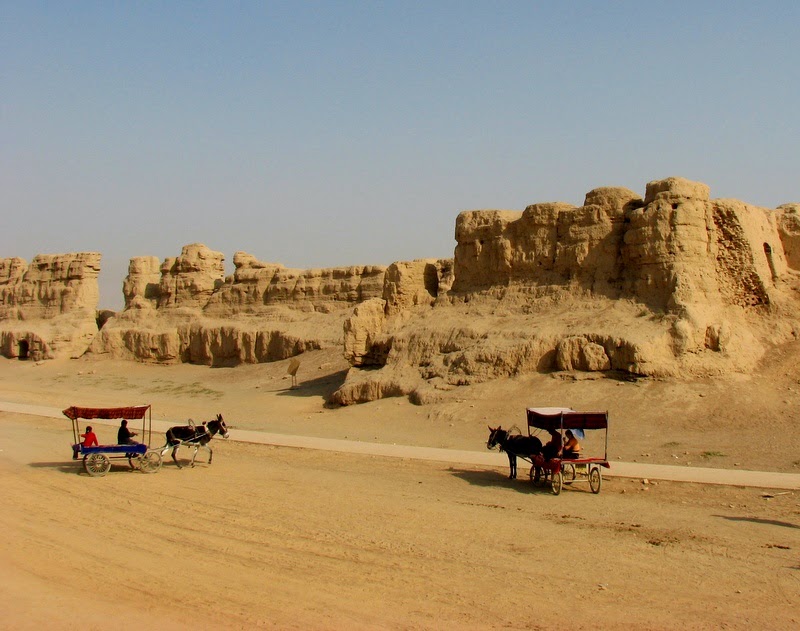The Three Immortals
Buddhist Caves
are in the northern part of Kashgar
City China
Among the three
caves, the middle cave is the biggest, with a height of 2 meters (about 6 feet)
and a width of 1.5 meters (about 5 feet). There is only an unfinished, headless
Buddha statue in the back room of the middle cave. The west cave is still in
its virgin state because it was unfinished at the beginning of the cutting.
There is nothing in this cave.
There are various
kinds of Buddhist paintings covering the walls of the front room of the east
cave. The standing Buddha statue in the back room is life-like, vivid and
elegant. The upper part of this Buddha's body is naked. His right hand is
parallel with his waist, while his left hand is lying along his leg naturally.
The most amazing about this statue is that there are three kinds of colors,
green, red and blue interwoven in his lower part. It is very rare to see Buddha
cave paintings in China
There is a legend
on cutting the pearl of Buddhism art, Three Immortals
Buddhist Caves
The legend also
adds some mysterious color and attracts people here from far away. But as it is
a dangerous place for people to reach; most of them only look from a distance.
For more
information, please visit http://top-chinatour.com
%2B-%2B%E5%89%AF%E6%9C%AC.jpg)
































